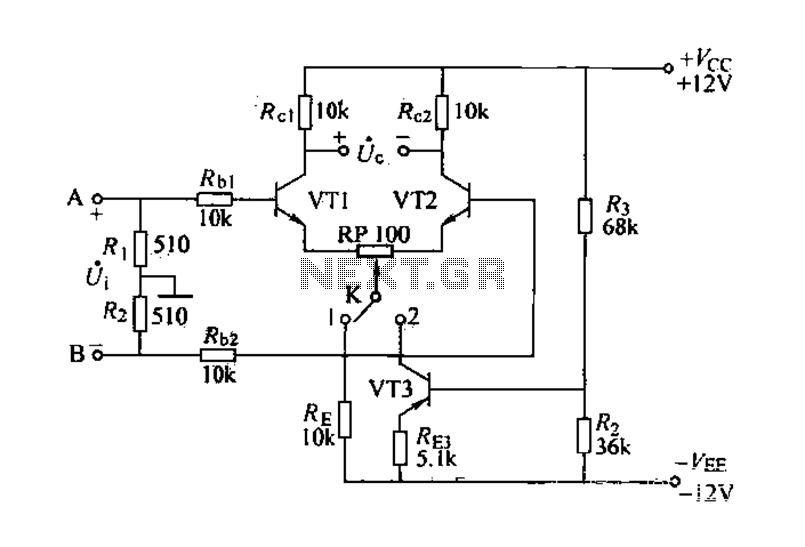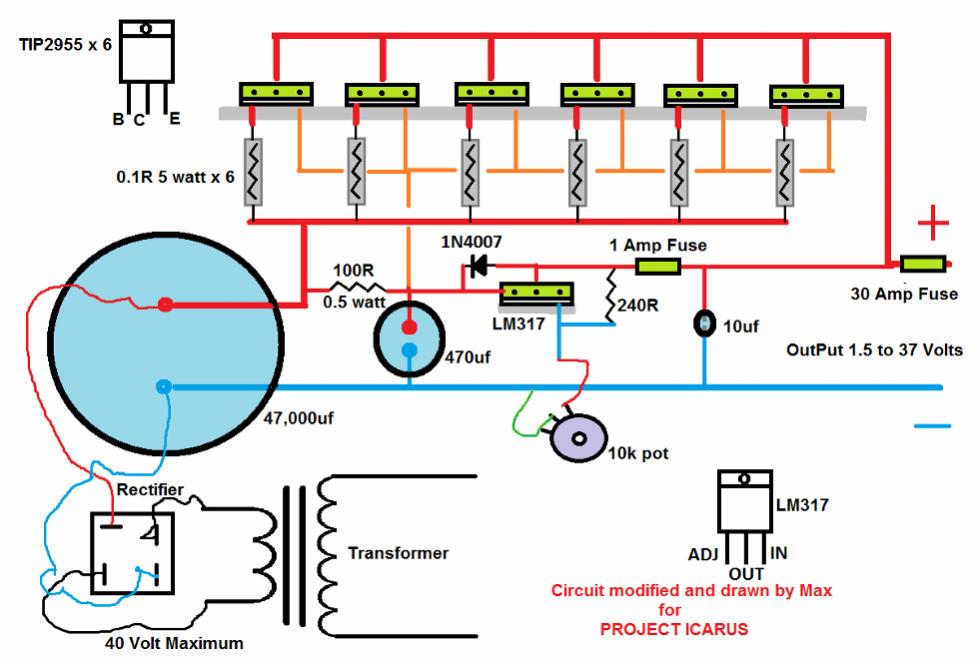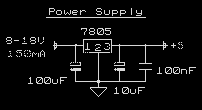
Schematics 100W Power Amplifier for Guitar

This schematic is essential. Visit this page to find a comprehensive pre-amplifier and power amplifier design for your guitar, which includes a complete explanation of its operation and instructions on how to construct the enclosure.
The provided schematic outlines a pre-amplifier and power amplifier circuit specifically designed for electric guitar applications. The pre-amplifier stage is responsible for boosting the weak signal from the guitar's pickups to a level suitable for further amplification. It typically employs operational amplifiers (op-amps) configured in a non-inverting arrangement to achieve high input impedance and low output impedance, ensuring minimal signal loss and distortion.
The power amplifier stage follows, designed to drive the speaker with sufficient power to produce audible sound levels. This stage may utilize a Class A, Class B, or Class AB configuration, depending on the desired sound characteristics and efficiency. The power amplifier is crucial for delivering the necessary wattage to the speaker while maintaining fidelity to the original guitar signal.
The schematic will also include details on component selection, such as resistor and capacitor values, which are critical for setting gain levels and frequency response. Additionally, it may provide information on power supply requirements, including voltage ratings and current capacities necessary for optimal performance.
Instructions for constructing the enclosure will likely cover materials, dimensions, and assembly techniques to ensure durability and aesthetic appeal. Proper grounding and shielding techniques will also be emphasized to minimize noise and interference, which are particularly important in guitar amplifiers.
Overall, this schematic serves as a valuable resource for both novice and experienced builders seeking to create a high-quality guitar amplification system.You need this schematics. Go to THIS page and you will find a good pre-amp and power amplifier for your guitar include the complete explanation of its works, and how to build the box. 🔗 External reference
The provided schematic outlines a pre-amplifier and power amplifier circuit specifically designed for electric guitar applications. The pre-amplifier stage is responsible for boosting the weak signal from the guitar's pickups to a level suitable for further amplification. It typically employs operational amplifiers (op-amps) configured in a non-inverting arrangement to achieve high input impedance and low output impedance, ensuring minimal signal loss and distortion.
The power amplifier stage follows, designed to drive the speaker with sufficient power to produce audible sound levels. This stage may utilize a Class A, Class B, or Class AB configuration, depending on the desired sound characteristics and efficiency. The power amplifier is crucial for delivering the necessary wattage to the speaker while maintaining fidelity to the original guitar signal.
The schematic will also include details on component selection, such as resistor and capacitor values, which are critical for setting gain levels and frequency response. Additionally, it may provide information on power supply requirements, including voltage ratings and current capacities necessary for optimal performance.
Instructions for constructing the enclosure will likely cover materials, dimensions, and assembly techniques to ensure durability and aesthetic appeal. Proper grounding and shielding techniques will also be emphasized to minimize noise and interference, which are particularly important in guitar amplifiers.
Overall, this schematic serves as a valuable resource for both novice and experienced builders seeking to create a high-quality guitar amplification system.You need this schematics. Go to THIS page and you will find a good pre-amp and power amplifier for your guitar include the complete explanation of its works, and how to build the box. 🔗 External reference





